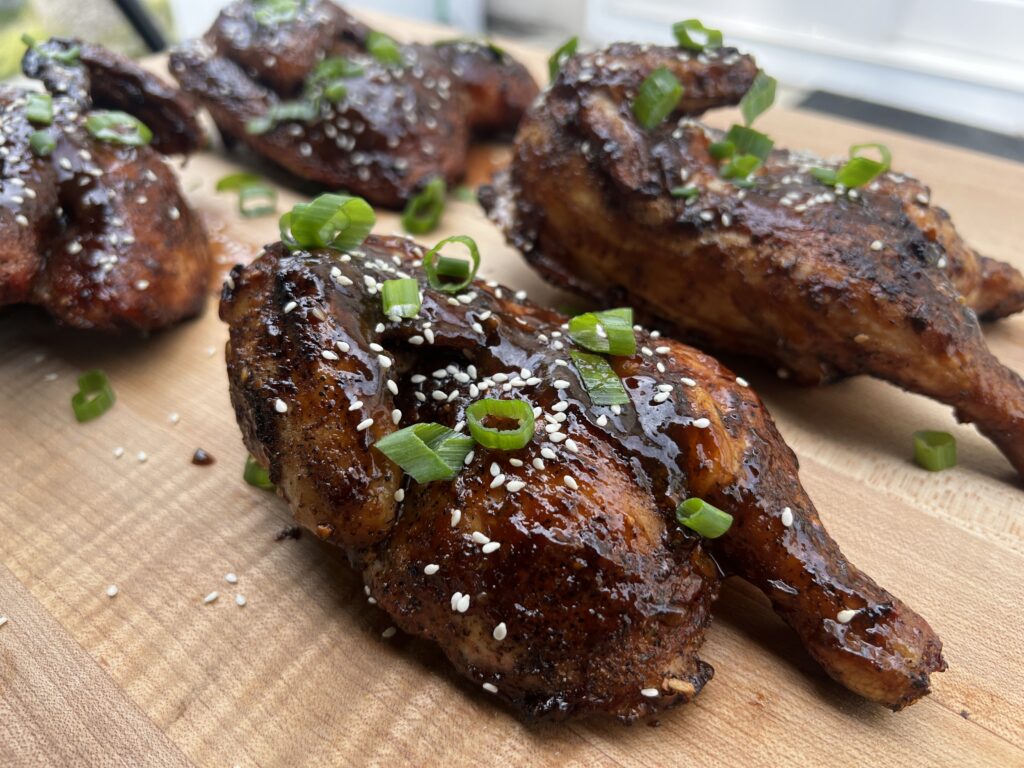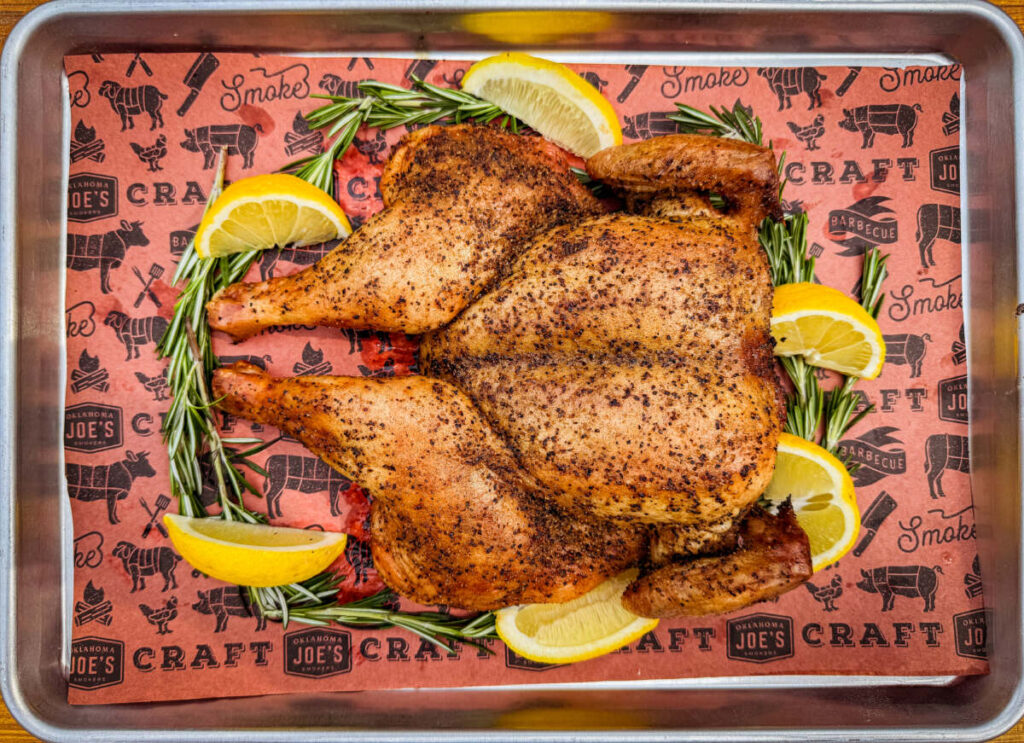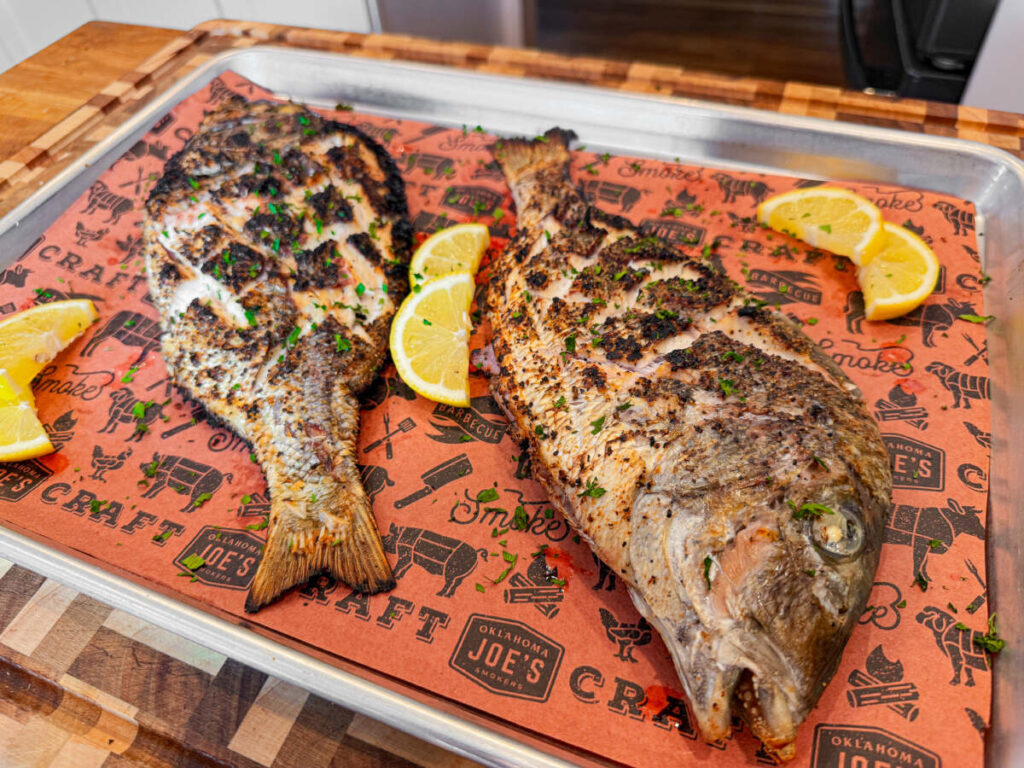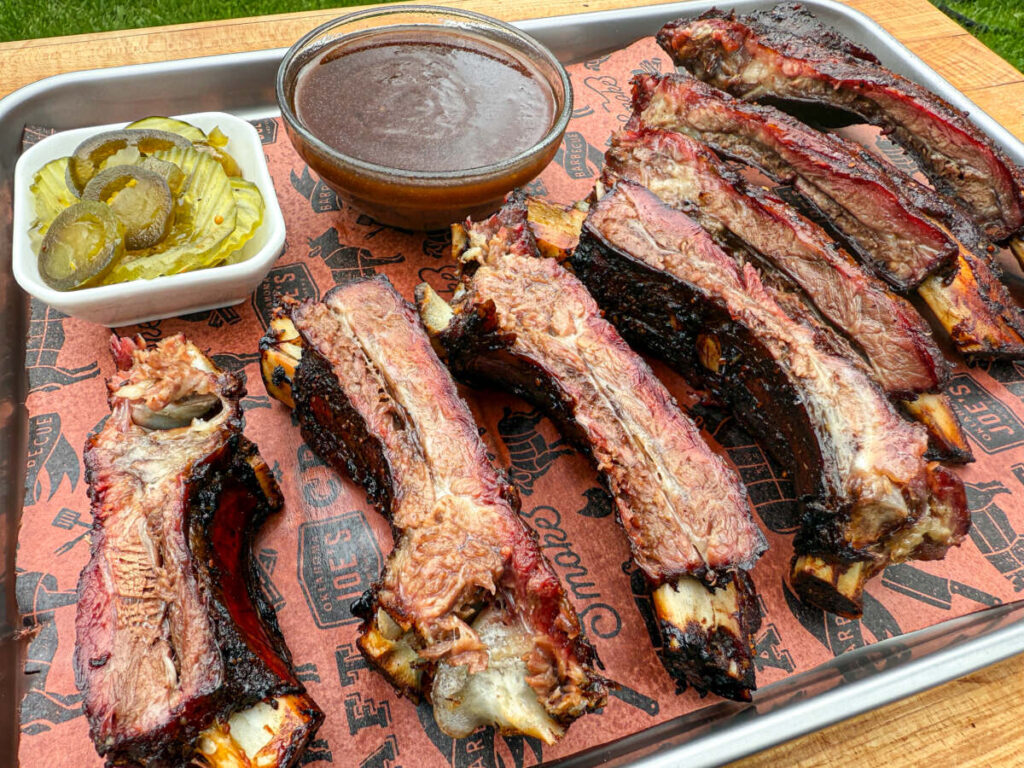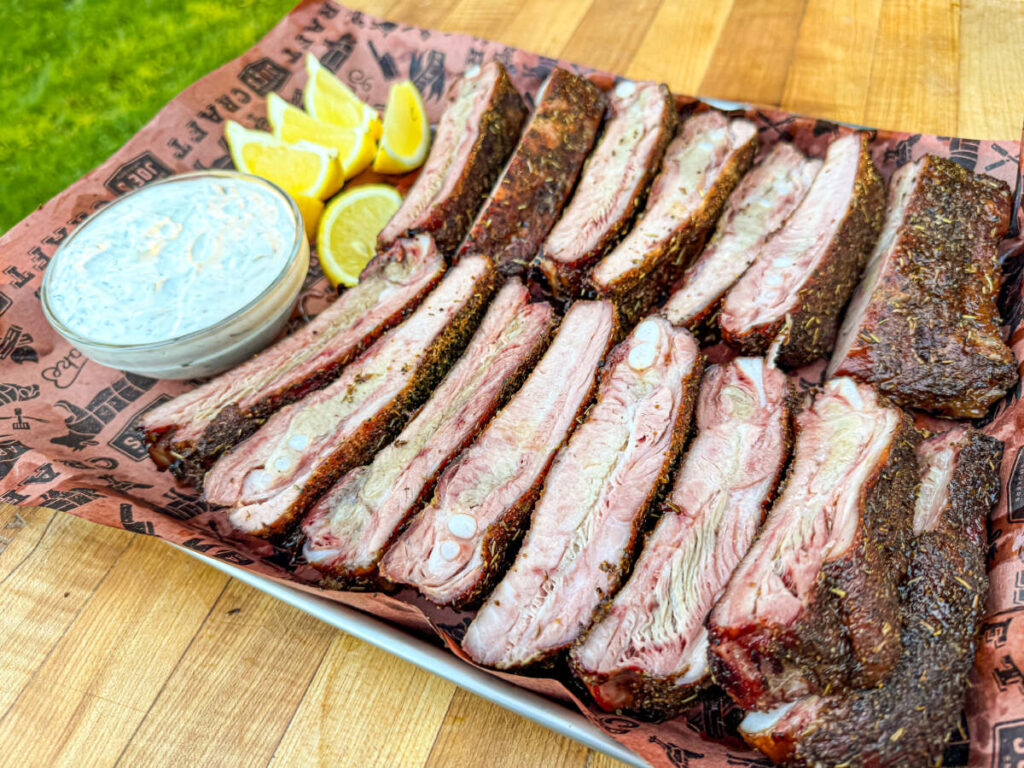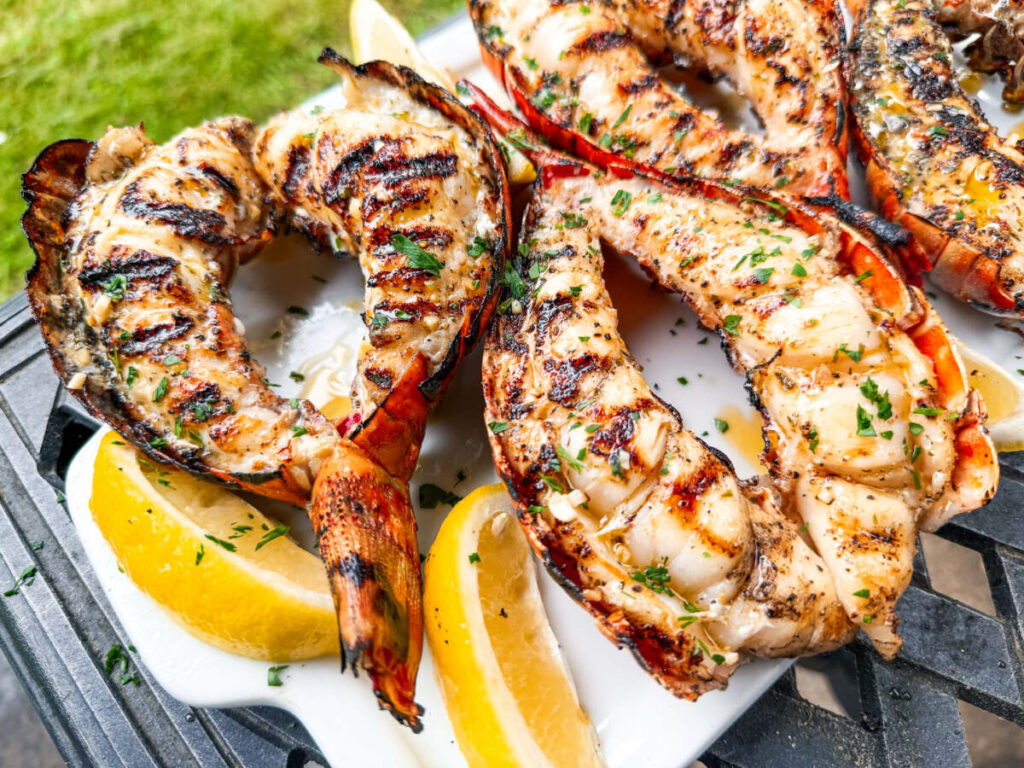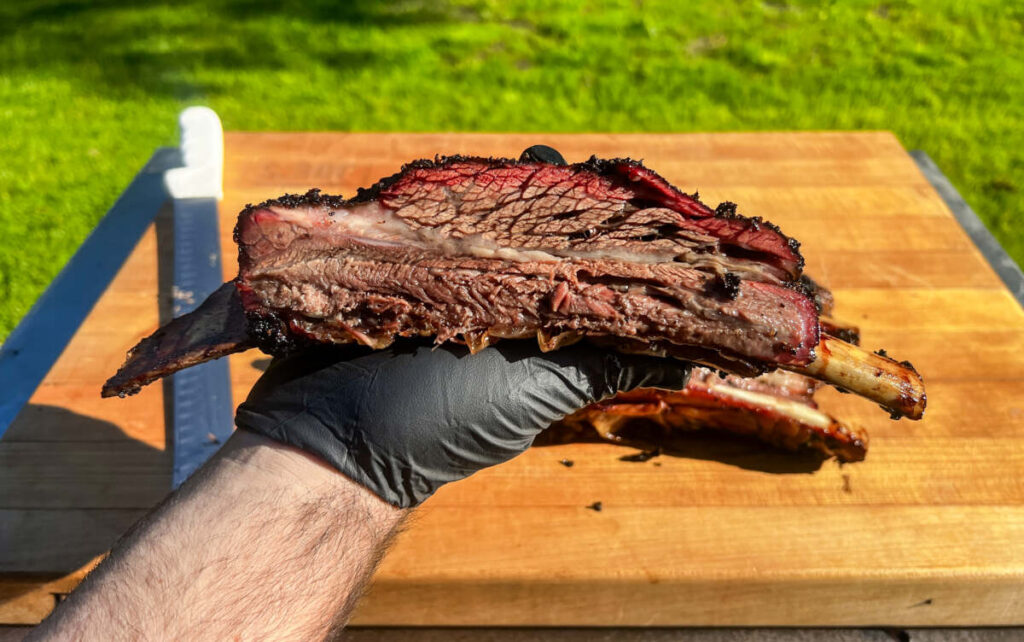There’s nothing quite like the deep, smoky flavor of a perfectly smoked brisket—slow-cooked until tender, juicy, and packed with bold BBQ flavor.
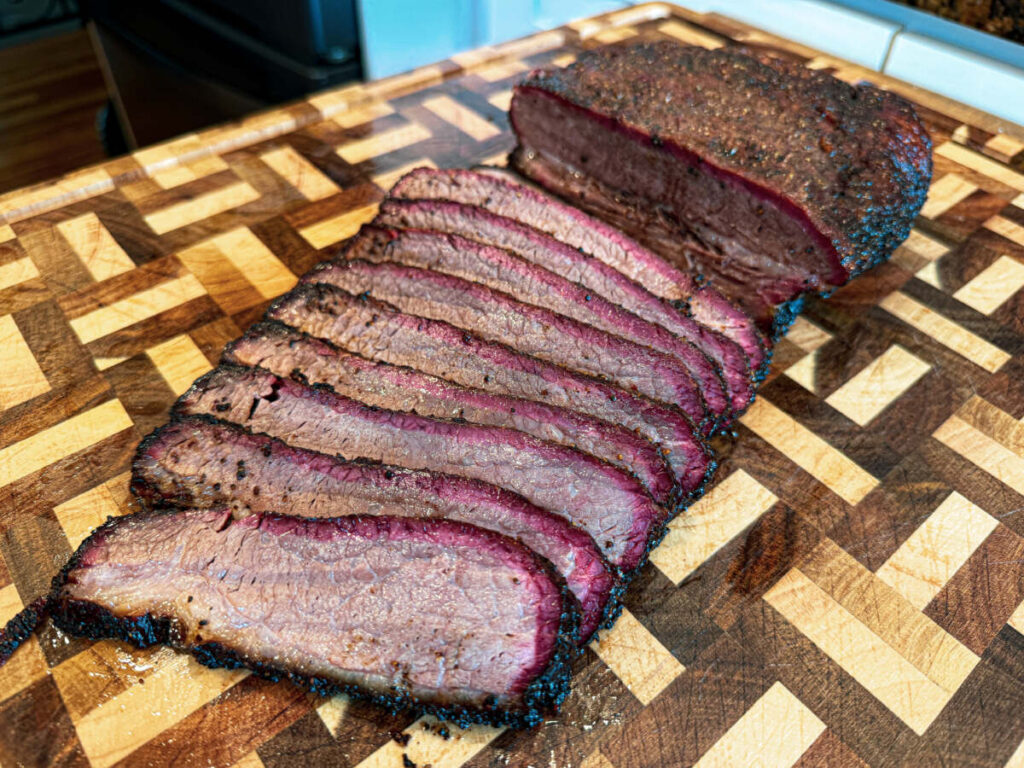
Get ready to master the king of backyard BBQ—Smoked Brisket. This recipe walks you through every step of transforming a tough cut of beef into a juicy, flavorful masterpiece. With a simple rub, low-and-slow smoke, and plenty of patience, you’ll create a brisket that’s fall-apart tender with a beautiful bark and a deep smoke ring. Whether you’re feeding a hungry crowd or meal-prepping for the week, this smoked brisket is the ultimate showstopper. Perfect for slicing, piling onto sandwiches, or serving alongside your favorite BBQ sides!
Feeds 4-6 people
Prep time 30-60 minutes
Cook time 10-12 hours
Why This Recipe Works
Low and Slow Cooking Breaks Down Tough Connective Tissue: Brisket comes from the lower chest of the cow, a heavily used muscle loaded with collagen and connective tissue. Smoking it low and slow—typically between 225–250°F (107–121°C)—gives that collagen time to break down into gelatin. This process is what transforms a tough, chewy cut into tender, melt-in-your-mouth beef over several hours.
Smoke Adds Deep, Complex Flavor: Wood smoke infuses the brisket with layers of flavor you can’t get from roasting or braising alone. Depending on the wood (like oak, hickory, mesquite, or pecan), the smoke imparts earthy, nutty, or slightly sweet undertones that build up over the hours, complementing the savory bark and juicy meat.
The Bark Creates Texture and Intensity: As the rub and smoke work their magic, the outer layer of the brisket transforms into a deeply flavorful bark. This crusty exterior adds contrast in texture and concentrates the spices, salt, and rendered fat—making each bite more intense and satisfying.
Resting Locks in Juices for Maximum Moisture: After smoking, resting the brisket in butcher paper or foil (and sometimes in a cooler) allows the juices to redistribute. This resting period—usually an hour or more—helps retain moisture, ensures even tenderness, and makes slicing easier without drying the meat.
Ingredients
- 1 whole packer brisket(The one i used for this recipe was around 12 pounds untrimmed)
- 3 tablespoons course Salt & Pepper seasoning
- 2 tablespoons worcestershire sauce for binder(You can use olive oil, yellow mustard or mayo as a binder as well
- Beef tallow
Brisket Trimming Process
Start with a Cold Brisket: Place your brisket in the freezer for 1 hour before trimming. A cold brisket is firmer and much easier to slice cleanly.
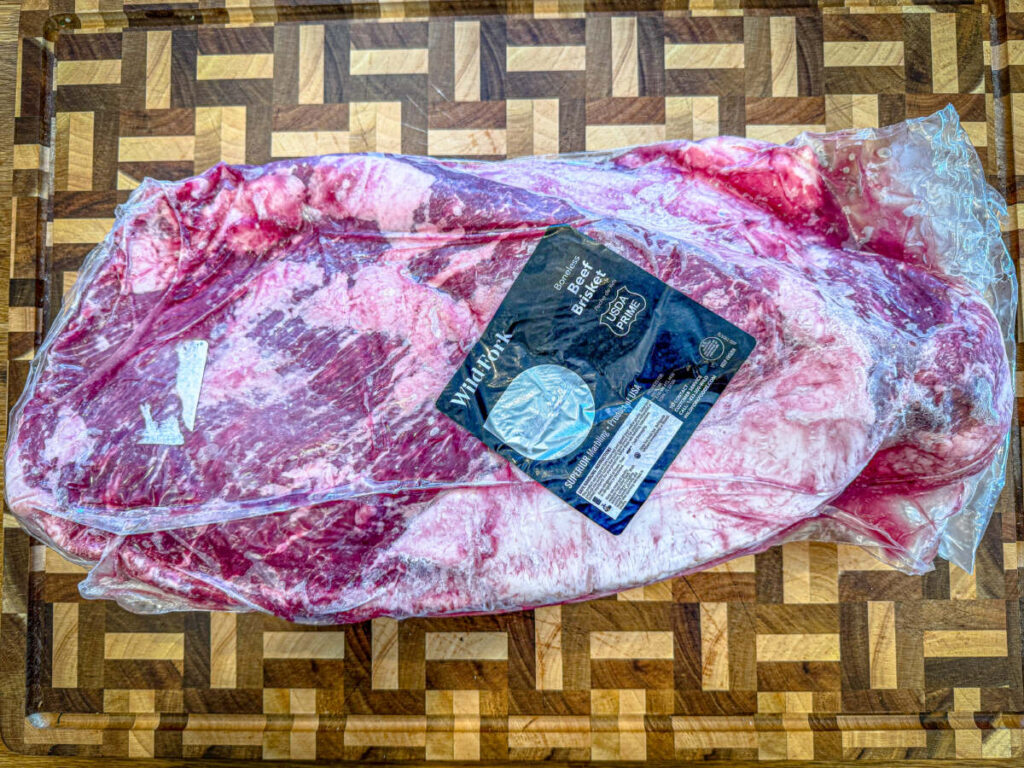
Identify the Parts: Lay the brisket fat-side up. Identify the point (thicker, marbled end) and the flat (leaner, thinner end). Also take note of the fat cap and hard deckle fat.
Square Up the Edges: Trim off any thin or ragged edges on all sides. This helps with even cooking and prevents dry, burnt ends.
Remove Excess Fat from the Underside (Meat Side): Flip the brisket fat-side down. Trim off any loose or hanging fat and silver skin from the meat side, especially around the edges. Leave the meat clean and even.
Tackle the Hard Deckle Fat: Locate the thick, waxy fat between the point and flat—this is the deckle. Trim as much of it out as possible without separating the muscles. It won’t render during cooking.
Trim the Fat Cap: Flip the brisket fat-side up. Start shaving the fat cap down to about 1/4 inch (6mm) thickness. You want enough fat to protect the meat, but not so much that it prevents seasoning and smoke penetration.
Feather the Edges: Where the point meets the flat, gently round and shape the fat to ensure even rendering and a smoother bark.
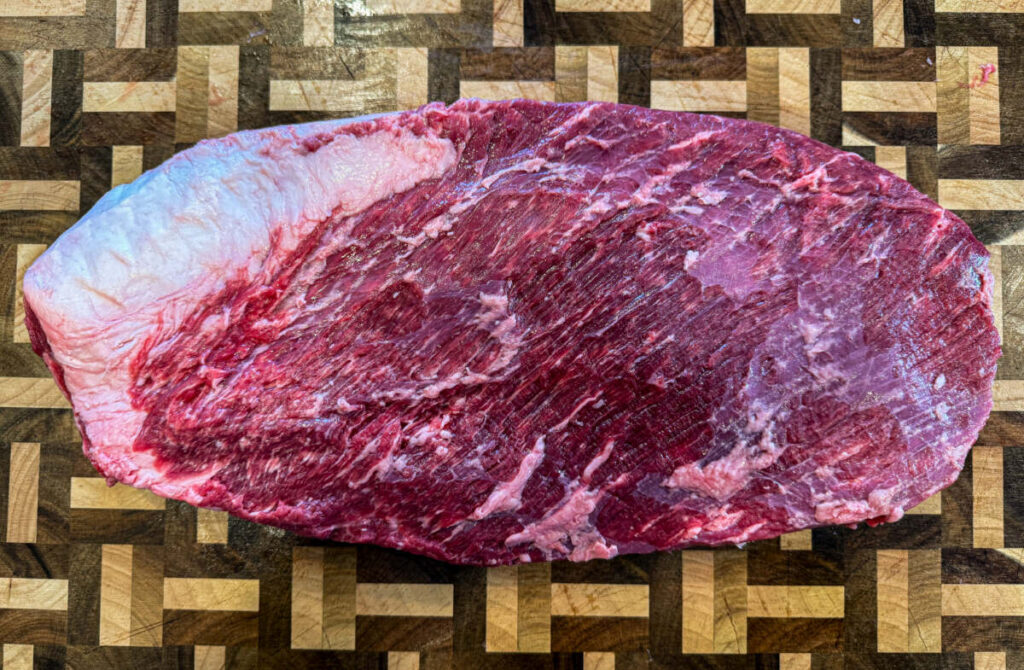
Optional – Shape for Uniformity: Give the brisket a final look and shape it up to be even and aerodynamic. This helps with consistent smoke coverage and a better final presentation.
Save the Trim: Consider saving your trimmings for burger blends, sausage, or tallow. Nothing goes to waste!
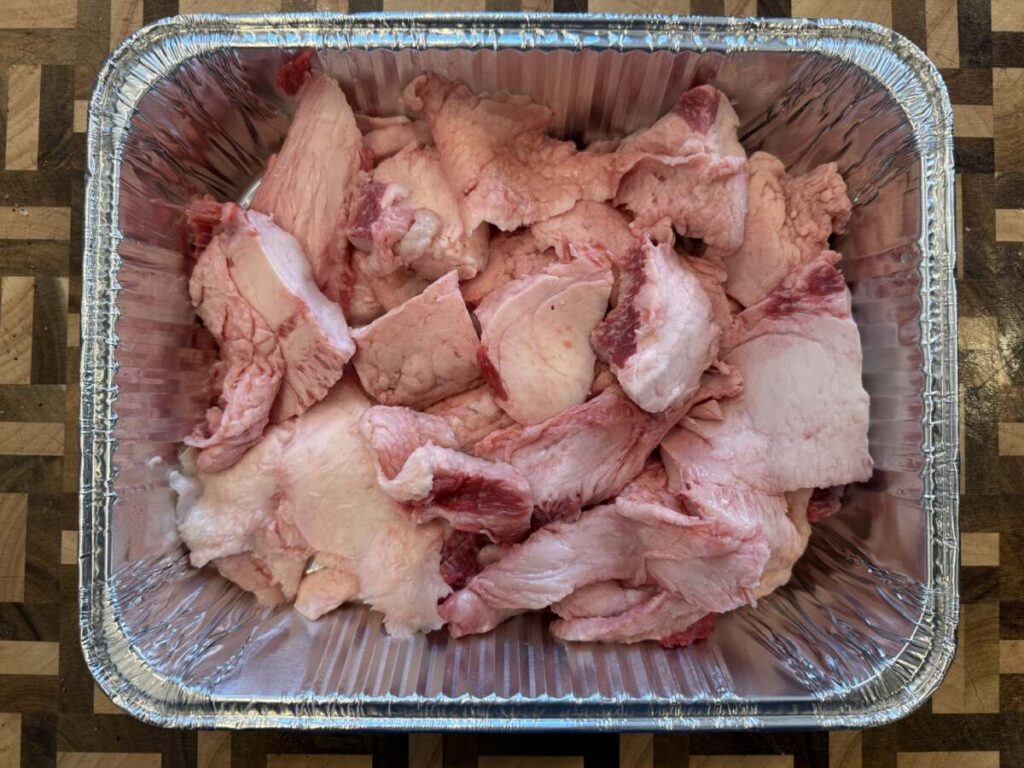
How To Smoke A Brisket Low & Slow
Prep Your Brisket: First, coat both sides lightly with Worcestershire sauce to act as a binder.
Season Generously: Apply a heavy layer of coarse salt and freshly cracked black pepper to all sides. Keep it simple to let the beef shine.
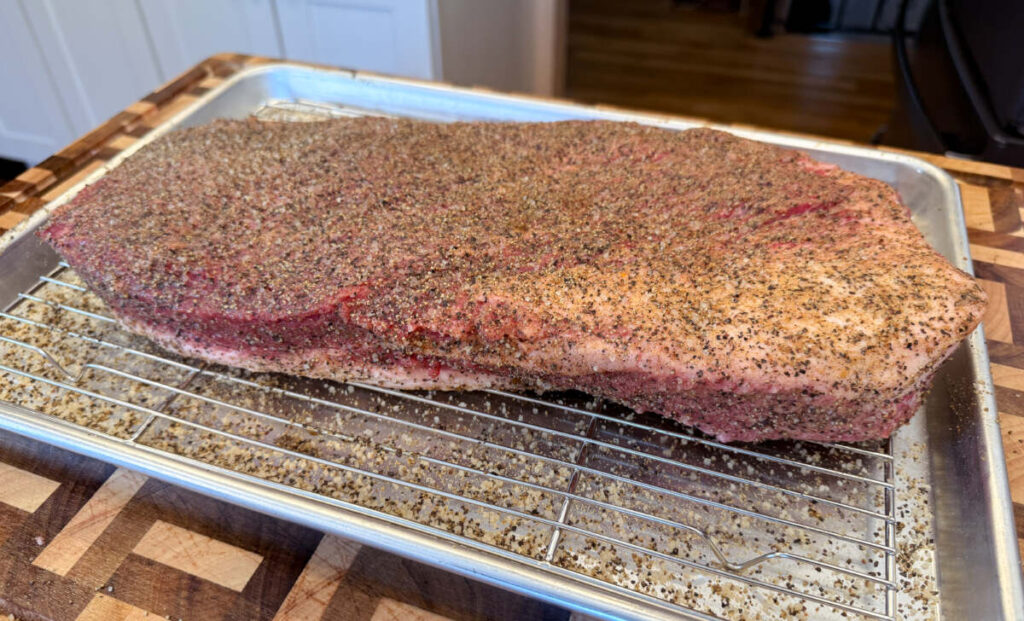
Render Your Tallow: Before you start your cook, place your saved beef fat trimmings in a small baking dish and roast them in the oven at 200°F (93°C). This will slowly render into rich beef tallow as your brisket cooks. You can use later for the wrapping process
Set Up Your Smoker: Preheat your smoker to 225°F (107°C). Place a water pan beneath the brisket to maintain a moist environment and help with temperature stability.
Place a Water Pan Under The Grill Grate & Choose Your Brisket Placement Based on Cook Style
- If you’re smoking overnight and not checking often, place the fat side up. This helps keep the leaner meat side moist during the long cook.
- If you’re monitoring the cook closely, go fat side down and spritz every 30 minutes to build bark and maintain moisture.
Let It Roll for the First Few Hours: Allow the brisket to smoke undisturbed for 3 hours to develop a deep bark before spritzing or opening the smoker.
Spritz Regularly (Optional): After the first 3 hours, begin spritzing every 30 minutes using water, beef broth, or apple cider vinegar to enhance bark and moisture.
Cook to Probe Tenderness: Continue smoking until the brisket reaches probe tenderness, which usually occurs around 203–205°F (95–96°C) internal temperature. A probe should slide in like warm butter in the thickest part of the flat.
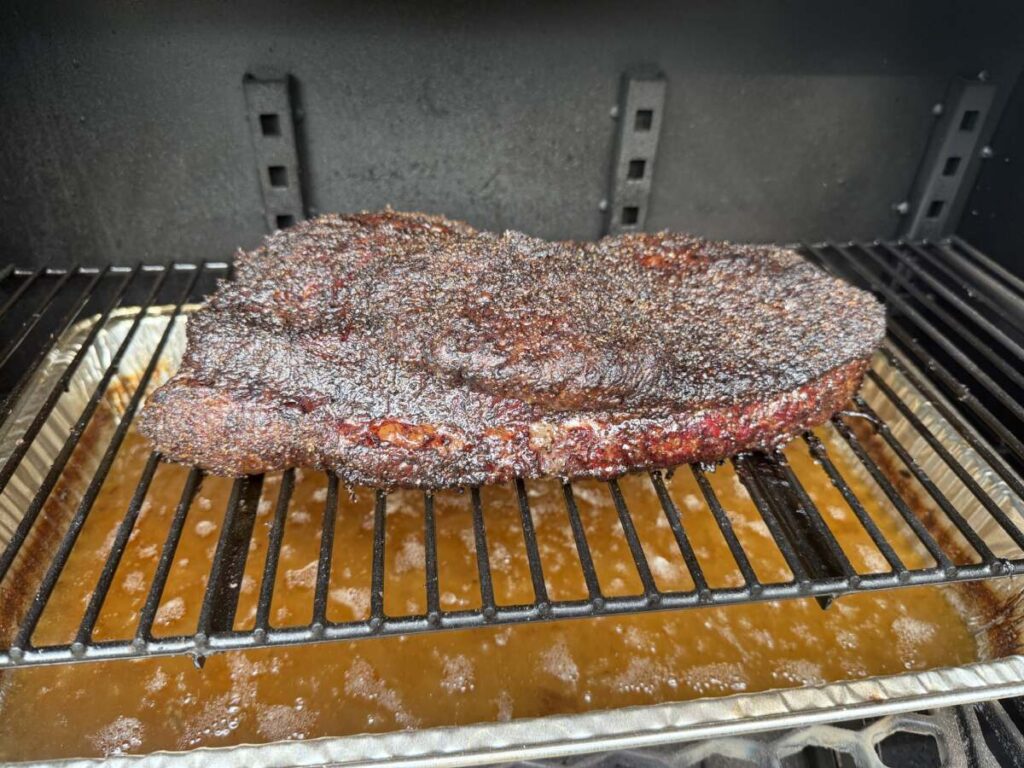
Resting Process
Rest with Tallow for Maximum Juiciness: Once the brisket reaches probe tenderness, wrap it tightly in aluminum foil along with a few spoonfuls of your rendered beef tallow. Then, let it rest for at least 1 hour—but ideally 3 to 5 hours in a dry cooler. This extended rest allows the juices to redistribute and makes for ultra-tender, flavorful slices.
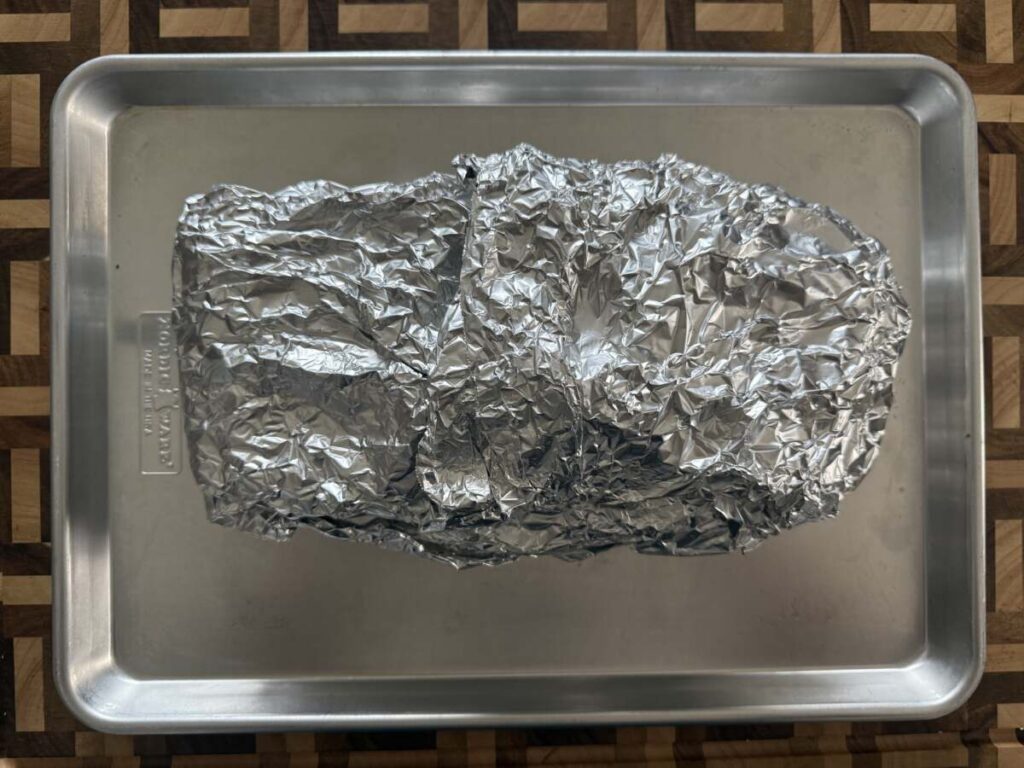
Carve up your Brisket: After resting, slice your brisket against the grain.
When you get to the point, you can either slice it up or cube it for burnt ends—totally up to you.

Fan of Texas Style BBQ? Try this Dino Beef Rib Or Smoked Beef Back Ribs
For summer cookouts i also love making Chuck Roast Burnt Ends
Smoked Brisket
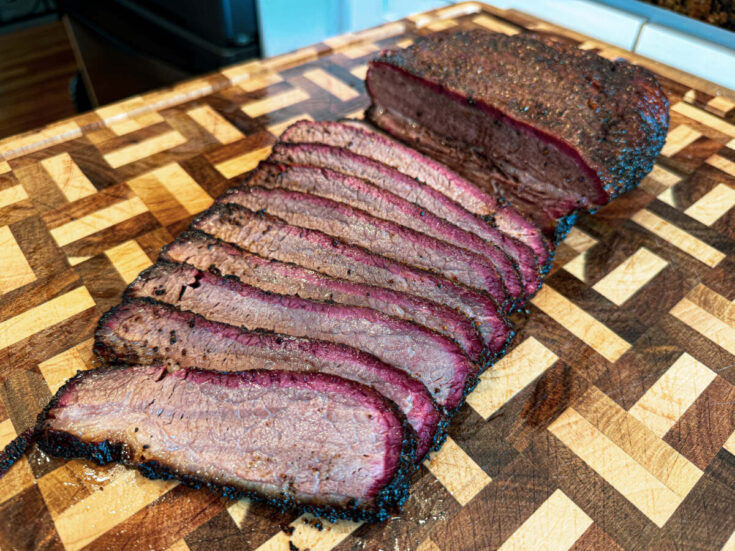
Get ready to master the king of backyard BBQ—Smoked Brisket. This recipe walks you through every step of transforming a tough cut of beef into a juicy, flavorful masterpiece. With a simple rub, low-and-slow smoke, and plenty of patience, you'll create a brisket that's fall-apart tender with a beautiful bark and a deep smoke ring. Whether you're feeding a hungry crowd or meal-prepping for the week, this smoked brisket is the ultimate showstopper. Perfect for slicing, piling onto sandwiches, or serving alongside your favorite BBQ sides!
Ingredients
- 1 whole packer brisket (10–14 lbs), trimmed
- 2 tbsp Worcestershire sauce (binder)
- 3 tbsp coarse kosher salt
- 3 tbsp coarse black pepper
- Water (for spritzing)
- Optional: beef fat trimmings (for rendering tallow)
Instructions
1: Prep the Brisket Trim the brisket by removing excess fat and silver skin. Save the fat trimmings for rendering tallow.
2: Season Apply Worcestershire sauce on both sides as a binder. Generously season with kosher salt and black pepper.
3: Render Beef Tallow (Optional) Place the trimmed beef fat in a small baking dish and cook in the oven at 200°F (93°C) while the brisket smokes.
4: Preheat Smoker Set your smoker to 225°F (107°C) and place a water pan beneath the grates to maintain moisture.
5: Place the Brisket on the Smoker
If smoking overnight, place the fat side up.
If monitoring the cook, place the fat side down and begin spritzing every 30 minutes after 3 hours of uninterrupted cooking.
6: Smoke Until Tender Let the brisket smoke low and slow until it reaches probe tenderness, usually around 205°F (96°C) internal temp. A thermometer should slide in with little resistance.
7: Wrap & Rest Once done, wrap the brisket in aluminum foil with rendered beef tallow, then rest it in a dry cooler for 3–5 hours. Resting is key for juicy slices.
8: Slice & Serve Slice against the grain and drizzle with extra tallow if desired.
Notes
Low and Slow Cooking Breaks Down Tough Connective Tissue: Brisket comes from the lower chest of the cow, a heavily used muscle loaded with collagen and connective tissue. Smoking it low and slow—typically between 225–250°F (107–121°C)—gives that collagen time to break down into gelatin. This process is what transforms a tough, chewy cut into tender, melt-in-your-mouth beef over several hours.
Nutrition Information:
Yield: 5 Serving Size: 1Amount Per Serving: Calories: 560Sodium: 880mgCarbohydrates: 1gFiber: 0gSugar: 0gProtein: 55g

